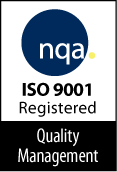Since 1982, the Anatomical Therapeutic Chemical (ATC) classification system has been maintained by the WHO Collaborating Centre for Drug Statistics Methodology in Oslo, Norway. The system provides a global standard for classifying medical substances and serves as a tool for drug utilization research. The WHO recommends the ATC system for international comparisons. In the WHO framework it is also used for reporting of adverse drug reactions. ATC codes are included both in international and national drug catalogues and represent a common language.
The Anatomical Therapeutic Chemical Classification (ATC) System divides drugs into different groups according to the organ or system on which they act and/or their therapeutic and chemical characteristics. Each bottom-level ATC code stands for a pharmaceutically used substance, or a combination of substances, in a single indication (or use). This means that one drug can have more than one code: acetylsalicylic acid (aspirin), for example, has A01AD05 (WHO) as a drug for local oral treatment, B01AC06 (WHO) as a platelet inhibitor, and N02BA01 (WHO) as an analgesic and antipyretic. On the other hand, several different brands share the same code if they have the same active substance and indications.What exactly are the benefits of a superior ATC coding system and what does it mean for Medical Coding? ATC coding and the WHO Drug Dictionary provides interactive reporting screens for coding classification, coded items, approved items and multiple workflow steps.Benefits of ATC Coding:• ATC coding is used by WHO CC and various agencies to track the incidence of adverse events associated with a drug’s utilization.
• ATC codes are widely used outside of North America in pricing and reimbursement negotiations
• ATC classification of a drug can be leveraged by a manufacturer to seek to re-brand a drug combination by citing newly acquired value differentiators.
• Different ATC codes can be assigned to the same active ingredient if it is combined with another active ingredient this can help extend the life of an older product. A company can utilize these WHO ATC coding conventions to help add new life to an aging product.
Drugs can have more than one indication. This is most often the case for cancer drugs, e.g. vastin or chemotherapeutics in general. When out-licensing such compounds in development, the licensor (biotech) is likely to point at the potential of the drug in several indications, increasing the overall value of the drug.By considering these important factors and benefits of ATC Coding, one should be able to determine a coding system that best fits their needs and future goals of the company.

